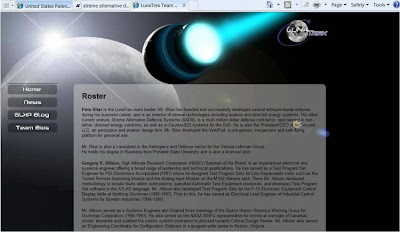The 7th Circuit decision in Sunstar, Inc. v. Alberto-Culver Co. is interesting in two ways: it provides some insight into how one company is managing the Japanese market, and also provides a little education on Japanese trademark licensing law.
Alberto-Culver, owner of the VO5 family of marks, wasn’t having any success in the Japanese market, so in 1980 it sold the Japanese marks to plaintiff Sunstar, Inc. for $10 million.
Sunstar wasn’t allowed to keep them though; instead it had to transfer them to Bank One Corporation to hold in trust for 99 years. Bank One Corporation would grant back a senyoshiyoken license – exclusive-use right – to Sunstar royalty-free, and at the end of the license Sunstar would regain full ownership. If, though, during the 99 years Bank One Corporation
| had a “reasonable ground” for thinking Sunstar had committed an act that created “a danger to the value or validity of LICENSOR’s [i.e., Bank One’s] ownership and title in Licensed Trademarks,” Sunstar would have to stop using the endangered trademarks until the trustee “reasonably determined” that the danger had passed. In the event of an actual breach of the license by Sunstar, the trustee was to rescind the license and return the trademarks to Alberto-Culver. |
In 1989, the two parties had a dispute over whether Sunstar could use this modification to the mark:

Sunstar thought it didn’t need permission but Bank One Corporation said it did, so ultimately another $10 million was forked over. Ten years later Sunstar adopted this mark:
 Again Alberto-Culver said it couldn’t. This time, though, Sunstar sued.
Again Alberto-Culver said it couldn’t. This time, though, Sunstar sued.
At trial, Alberto-Culver argued that it hadn’t really granting a senyoshiyoken license, but instead used the term to mean that Sunstar could register the trademarks with the Japanese Trademark Office. The district court agreed and didn’t instruct the jury on what rights a licensee in a senyoshiyoken license would have. The jury returned a verdict for Alberto-Culver, so the district court ordered the agreement terminated and the marks returned to Alberto-Culver.
But not so fast, said the Court of Appeals; the appeals court disagreed that the use of the term “senyoshiyoken” as the term is used under Japanese law didn’t describe the license granted. The court therefore had to decide whether, under Japanese law, a senyoshiyoken licensee could make this type of alteration to the mark.
According to the court, a senyoshiyoken licensee can modify the mark if the change is insignificant enough that one could tack on to the earlier use. This rule makes sense particularly in the case of a 99-year license, where the mark would need to change to remain effective in the market. Indeed, the court even speculated that Sunstar might have created “a danger to the value or validity” of the marks if it hadn’t modernized the mark.
So from the case we learn that a senyoshiyoken license is exclusive within the geographic scope even as to the licensor, and that it confers the right to register the mark and to sue in the licensee’s name. The Court of Appeals includes another right – to make small variations to the mark.
And the inimitable Posner, J.: “Apparently Sunstar has done better in Japan than Alberto-Culver expected, and, as in 1989, Alberto-Culver has tried to use a hypertechnical, but more important an unsound, interpretation of the licensing agreement to extort additional compensation.” Indeed, it’s a bit unbelievable that a licensor would grant a 99-year license, with the licensee to acquire full ownership at the end, and not allow the licensee to update the mark for a century. If Alberto-Culver is concerned that the VO5 mark in Japan will be different from the rest of the world, that’s the natural result of the deal that Alberto-Culver struck in 1980 when it assigned the marks in all but name.
Sunstar, Inc. v. Albert-Culver Co., Nos. 07-3288, 07-3289, 08-3835, 08-3836, 08-3931, 08-3936, 2009 WL 3447450 (7th Cir. Oct. 28, 2009) (Posner, J.)
© 2009 Pamela Chestek
 Press coverage of the hearing is here. Based on the report, it doesn’t look very good for Mattel.
Press coverage of the hearing is here. Based on the report, it doesn’t look very good for Mattel.





